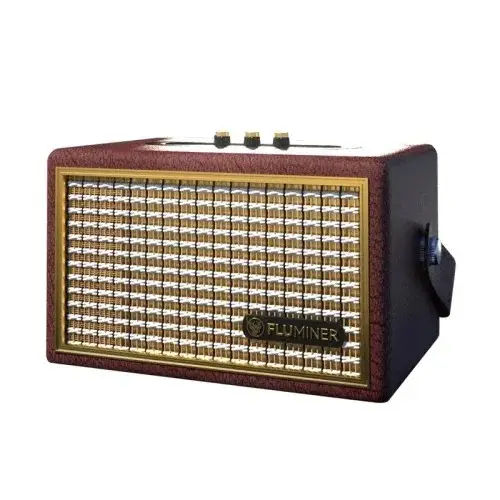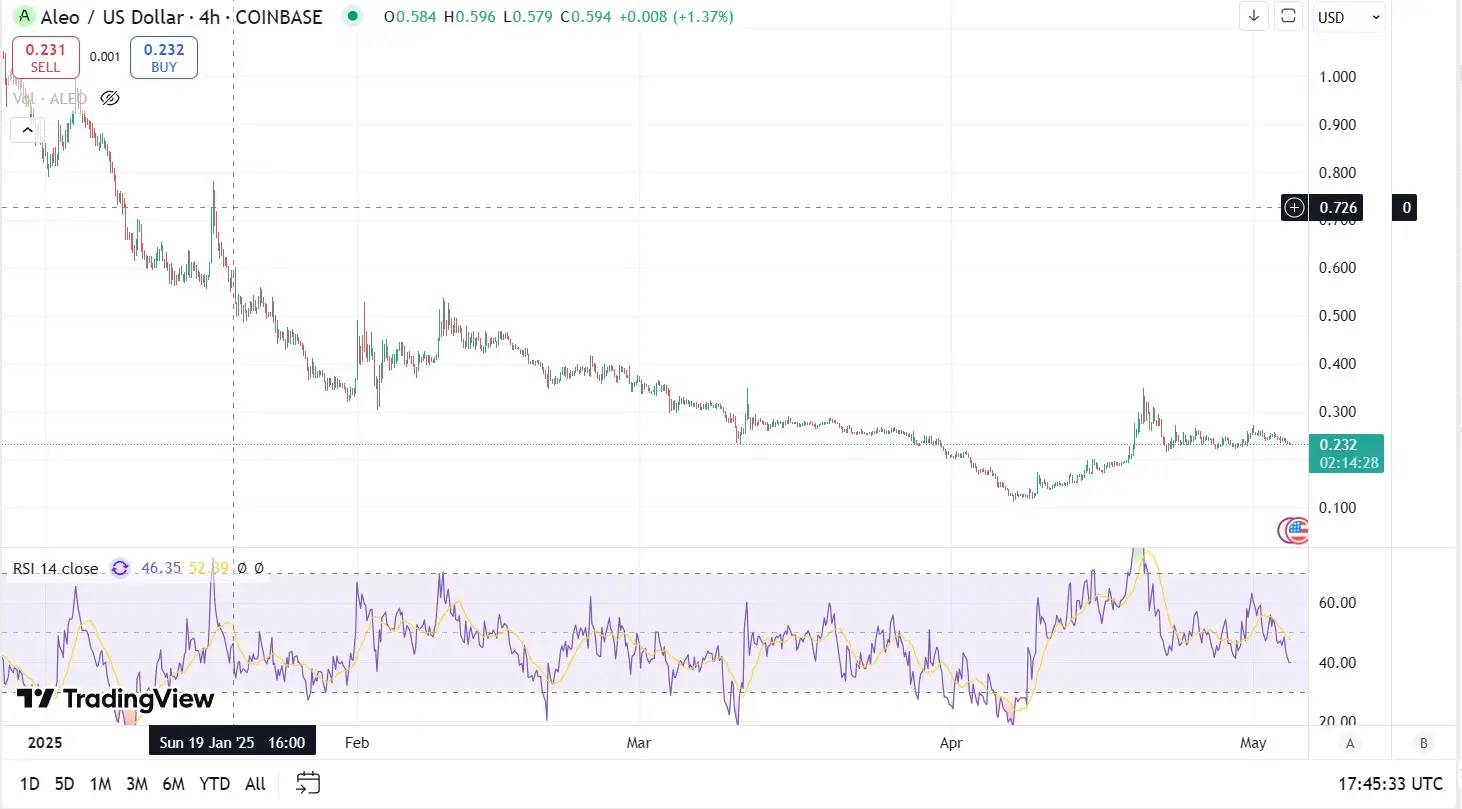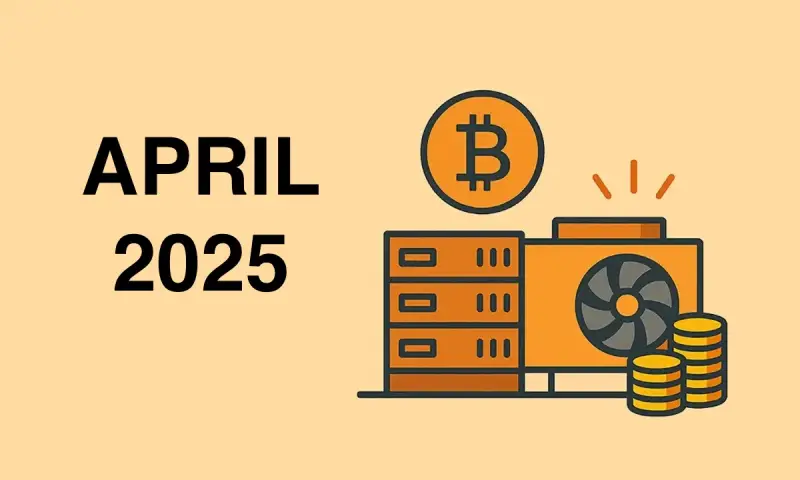What was going on in the mining world? Summary for April 2025
New technologies, ALEO history, and more.
New Technologies and Products
In April, we added a number of new products,which you can find with descriptions below. However, one of them is worth a more detailed description for its interesting design.
Fluminer L2
The Fluminer L2 is a new product for the home ASIC miners. It works with the Scrypt algorithm and is gaining popularity due to its relatively low power consumption, quietness and compactness. As a point of interest, it reaches a hashrate of about 1 GH/s with a power consumption of about 230 W, but that's not why we focused on it.
After all, the stylish look of an old-school speaker or amplifier isn't just for decoration. Miner has a built-in speaker that can be controlled via WiFi.
It will offer the most to people who want to consume energy from, for example, solar panels, but at the same time don't want to convert one whole room into a home farm. Your beloved one will probably appreciate it as well- Find out morehere.

More new miners
Here is a list with links to new products, excluding the already mentioned Fluminer:
- Avalon Q Home – A powerful and compact miner aimed at home mining with an focus on low consumption.
- Avalon Nano 3S – A very energy efficient miner (approx. 140 W), perfect for solo mining.
- Avalon Mini 3 – - A miniature machine with the possibility of being used as a heater thanks to heat dissipation.
- Volcminer D1 Mini – A small Scrypt miner with quiet operation, ideal for the home environment.
- Volcminer D1 – Classic Scrypt miner for domestic and small industrial mining.
- Goldshell Mini DOGE III – New generation compact Scrypt miner for DOGE and LTC, very quiet.
- Goldshell BYTE – Modular home miner with support for multiple algorithms (e.g. ALEO, DOGE, LTC), quiet operation and low power consumption around 65 W.
- Nerdminer T Display S3 – Ultra-compact solo Bitcoin miner with 1.9" display, powered via USB-C, consumption around 1 W.
- Braiins Mini Miner 101 – Silent SHA-256 miner with 1 TH/s performance at 35 W consumption, ideal for home Bitcoin mining.
You might be interested in:Will Bitcoin mining pay off in 2025?
Hosting in the United Arab Emirates
Due to significant and unpredictable changes in US trade policy, we have suspended accepting new machines for our Kansas datacenter. We have been working for a while to expand our datacenter on the other side of the world, in the United Arab Emirates, and its conditions are now more profitable for miners than in the US.
There have been some changes to the terms and conditions. You can still enjoy free delivery, the best prices on the market, direct contact, and, thanks to the location, VAT-free prices. What will change for the better is the price of electricity, from $0.09 per kWh to $0.075. There have been other recent changes that we would like to clarify.
Note: In the datacentre we are now offering, where we have electricity at $0,075/kWh, running an ASIC miner is significantly more cost effective than at the US rate of $0.09/kWh. For example, a device with an annual consumption of 28,470 kWh (e.g. Antminer S19 Pro) would cost $2135.25to run at the cheaper price, while operating at the higher rate would cost $2562.3. The annual difference is almost $400 per (!) device.
Let us make another small clarification. Each machine is required to consume 2.5 kWh. This is met by virtually all miners except for the domestic mining category. The number does not matter. However, if you buy miners outside of us, you are required to have at least five of them at the same time. However, this does not happen very often.
Another important point is the costs related to hosting, but not related to electricity. The first is a refundable deposit of two months of combined electricity payments in hosting. This is the same as it was in the US. However, in order to provide free shipping, continuous monitoring and operation, we had to account for a one-time startup fee of $250 per miner.
Aleo (ALEO)
Aleo is a sucker when it comes to Proof-of-Work (PoW) cryptocurrencies, which are usually among the oldest on the market. It's a strange combination of technology, experimentation and a good idea. Development began in 2019, and a team with academic roots at MIT and Stanford is behind the project. Aleo also had a significant amount of luck thanks to massive investments from a16z, Coinbase Ventures, SoftBank and others.
It begs the question of what makes it specific enough to raise money even as a PoW project. Aleo aims to enable the building of private decentralized applications through Zero-Knowledge Proofs technology, specifically ZK-SNARKs. The focus is on protecting user privacy while maintaining high performance and high scalability. Very simply, Aleo seeks to combine the security of PoW with the scalability and speed of Proof-of-Stake (PoS).
If it needs saying, Aleo is built as a separate layer-1 blockchain, with its own infrastructure from the ground up. Contrary to traditional blockchains, which overwhelmingly store all transactions publicly, Aleo allows computations to be performed off-chain and only stores cryptographic proof that the computation was performed correctly on the blockchain. In addition to privacy, this model significantly reduces performance requirements and preserves trustworthiness.
The platform operates with its own language Leo, specifically written for the ZK Proofs specification… The developer can easily specify which parts of the application should be public and which parts should be completely private. The dApps most suitable for Aleo are anonymous decentralized exchanges, private login systems and much more.
ALEO Cryptocurrency
The same-named cryptocurrency of the Aleo network is mainly used for payment of transactions, interactions and calculations. This is no different from any other blockchain. The secondary purpose is, of course, to motivate miners.
ALEO mining is without a doubt risky. It can be useful as a way to diversify if you already operate a small home farm.
From a technical perspective, the mining system uses a unique consensus model called Proof of Succinct Work (PoSW). It combines computational power and generating proofs of correctness. Mining is designed to be decentralized but computationally resource intensive, reducing the risk of centralization.
You might be interested in:Will Bitcoin mining pay off in 2025?
You'll often find Aleo compared to projects like Zcash (for private transactions) or zkSync and Starknet (for zero-knowledge smart contracts). However, its philosophy is different: instead of just anonymizing transactions, it intends to create an entire platform where privacy is merely a building block.
In practice, Aleo has potential. But whether it will be realised remains to be seen. Feel free to let us know your thoughts on Aleo onFacebook.
ALEO's profitability
It is difficult to determine how profitable ALEO mining can be. Anecdotes talk of up to $40 a day, but it depends on many factors - from the price of electricity to the difficulty of extraction. Due to the low consumption of the equipment, we cannot count on a farm, so we will use the average price of electricity in European households to calculate the return. At current prices, a powerful IceRiver would generate a profit of approximately $909 (ROI 3 months), the others do not perform very well. Be aware that this can change from day to day.
This is a risky altcoin, and the reasons for mining it are similar to the reasons for holding it in a portfolio - it's something new that can explode, but also fall to zero. The price has dropped approximately 90% since trading began, but that doesn't mean it can't fall further. On the other hand, if ALEO prospers, its mining could be one of the most profitable thanks to low-power devices with decent performance.
However, building an entire farm - as well as an entire portfolio - on one risky cryptocurrency may not be profitable. However, if you're already mining a bit of LTC or BTC at home, ALEO may come in handy. The above should also be considered when evaluating alternatives.

